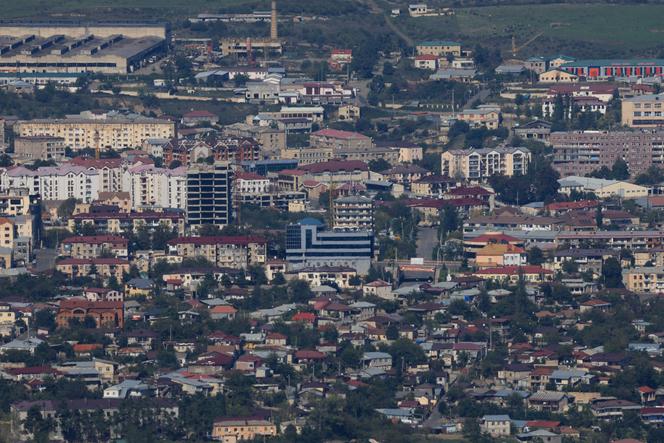


Two weeks after the surrender of Nagorno-Karabakh following a lightning military offensive, on Tuesday, October 3, Azerbaijan re-issued a map of the capital of the former Armenian separatist enclave (Stepanakert in Armenian, Khankendi in Azerbaijani), with street names in Azerbaijani. One of these streets is named after Turkish military officer Enver Pasha, one of the main instigators of the Armenian genocide of 1915. The map was first published in August 2021.
The map is re-issued at a time when Baku is intensifying its efforts to convince the international community that it will respect the rights of Nagorno-Karabakh Armenians wishing to remain in the enclave.
Azerbaijan President Ilham Aliyev has promised a "peaceful reintegration" and to turn the region into a "paradise." "Equal rights and freedoms for all, including security for all, are guaranteed regardless of ethnicity, religion or language," his government said again on October 2.
The start of the integration process had been formally announced the day before, on October 1. The Azerbaijani media widely broadcast a video of two people said to be Armenians who are choosing to stay and live in Nagorno-Karabakh under Azerbaijani rule. The actual identities and backgrounds of these two individuals are unknown.
If Armenians do remain in Nagorno-Karabakh, it would provide Azerbaijan with an opportunity to showcase its "peaceful reintegration." It could also provide Russia with an excuse to keep its 2,000 or so peacekeepers in the region, which have been deployed there since the end of the Nagorno-Karabakh war in 2020. However, among the refugees that Le Monde met in Armenia, not a single one believes in the possibility of a "peaceful reintegration," or even that Armenians would voluntarily choose to remain in the enclave. "They kill and rape civilians. How can we imagine living with them?" one of them said.
After Baku's victory in Nagorno-Karabakh in 2020, President Aliyev boasted that Azerbaijani forces drove out the Armenians "like dogs." Terrified by the arrival of the Azerbaijanis after their offensive on September 19, culminating in the fall of Nagorno-Karabakh, the enclave's 120,000 or so Armenians, fearing for their lives, fled en masse to Armenia. The region, which until now had been populated mainly by Armenians, is now virtually empty. Armenia has denounced this as an "ethnic cleansing."
On Sunday, a United Nations mission was able to visit Nagorno-Karabakh for the first time in about thirty years to assess humanitarian needs. It declared that it had seen no destruction and heard no reports of violence against civilians since the ceasefire, raising skepticism and indignation among Armenians.
